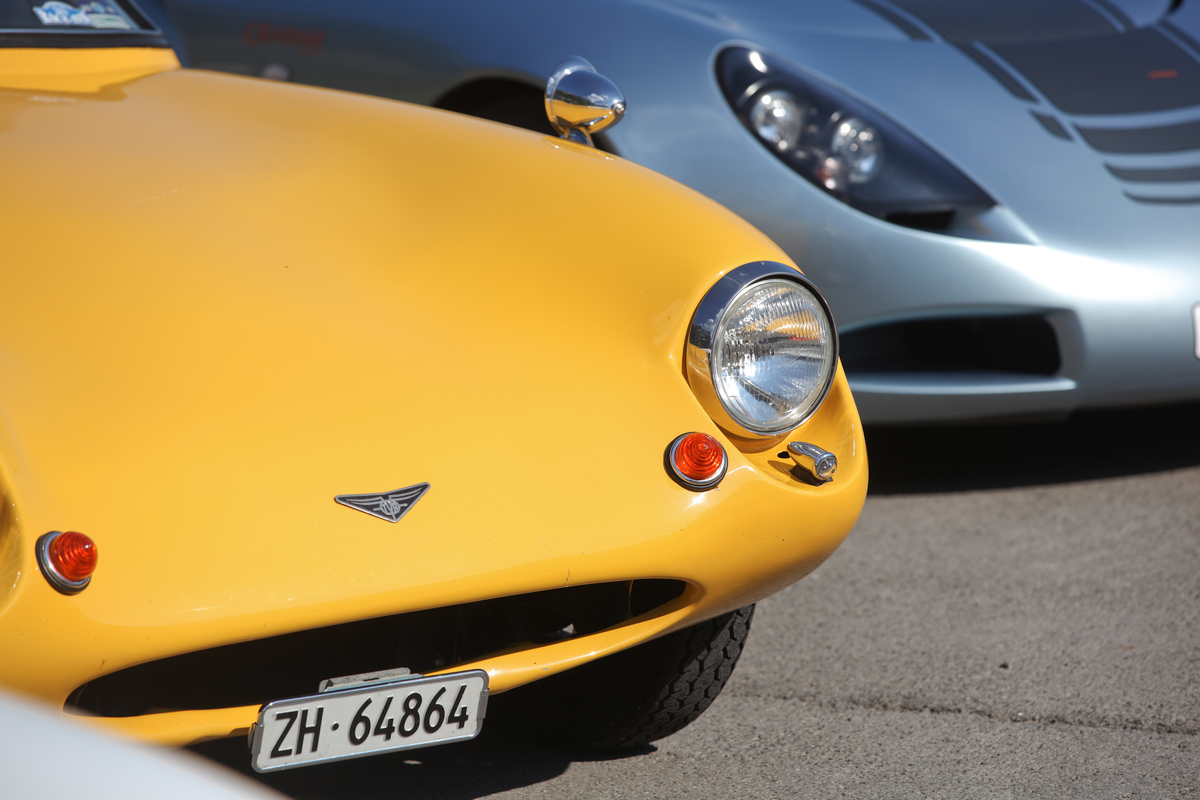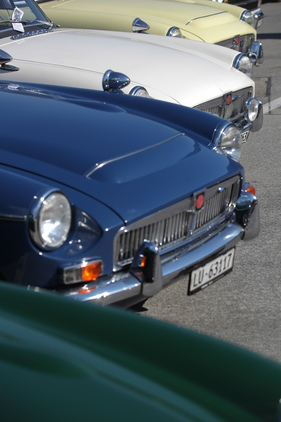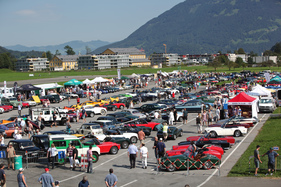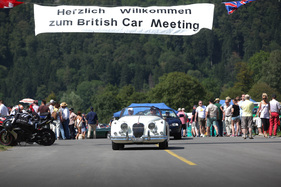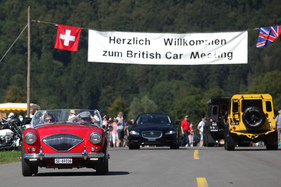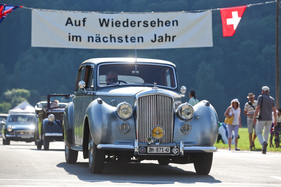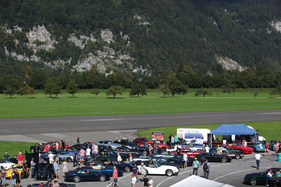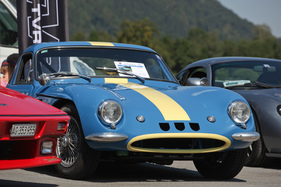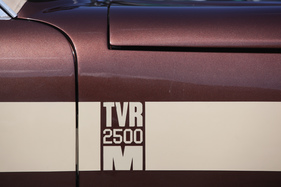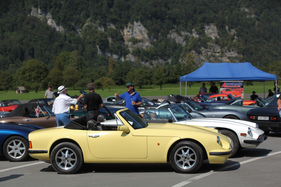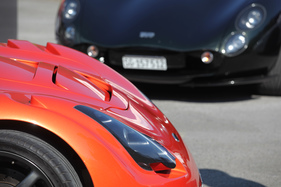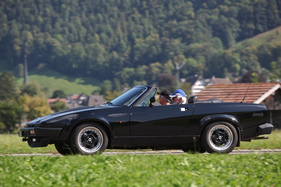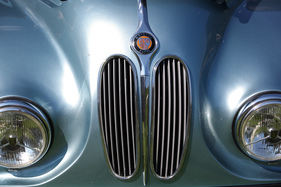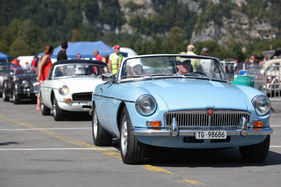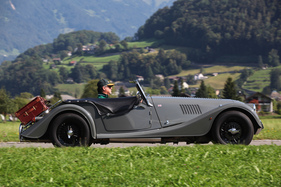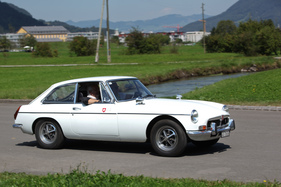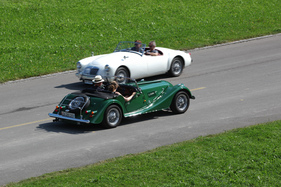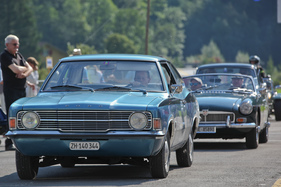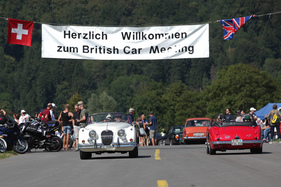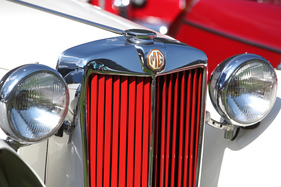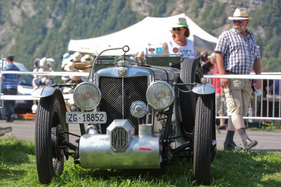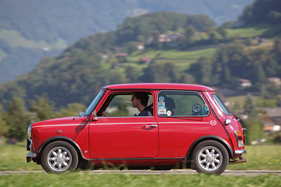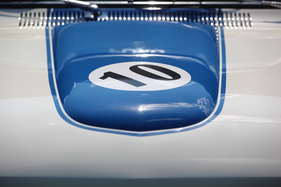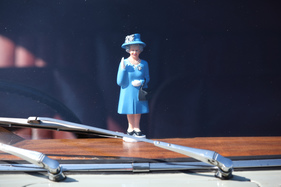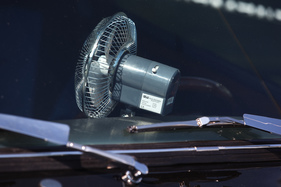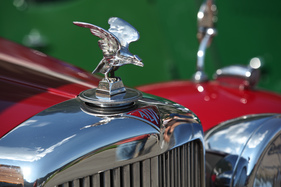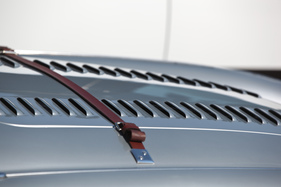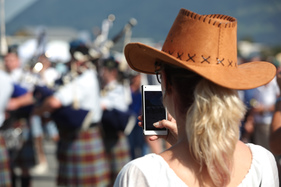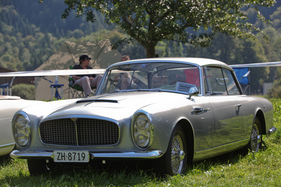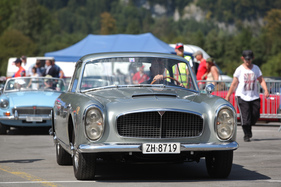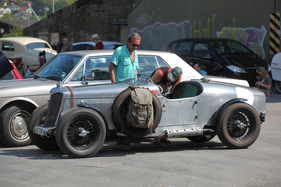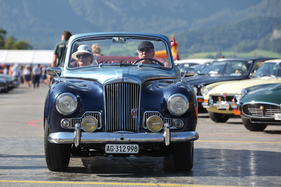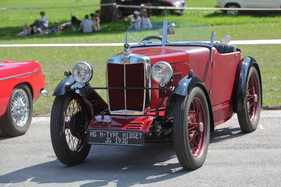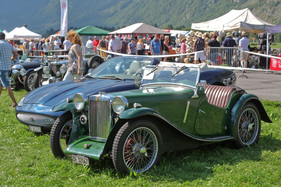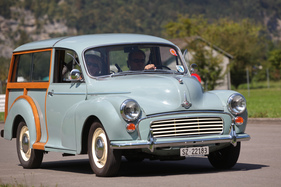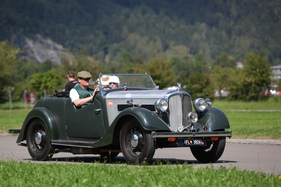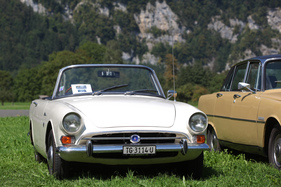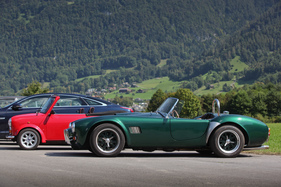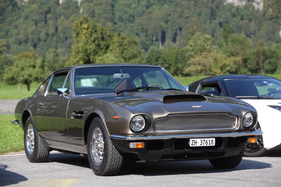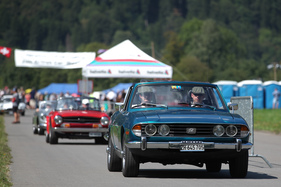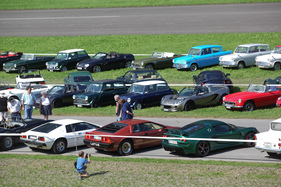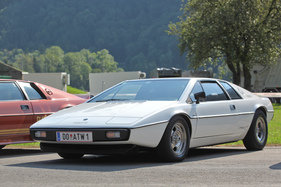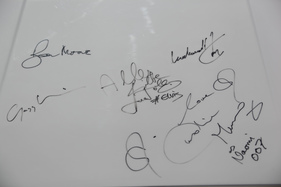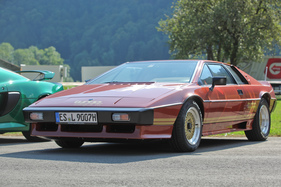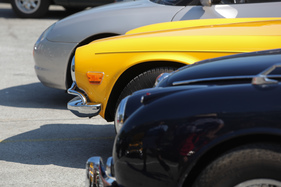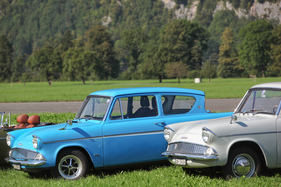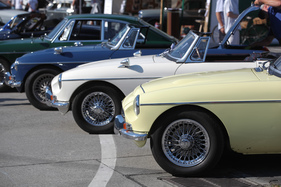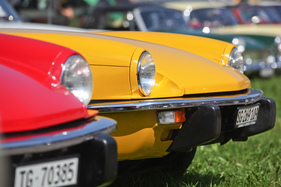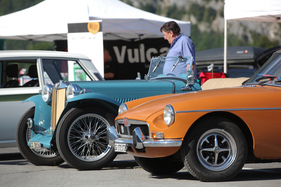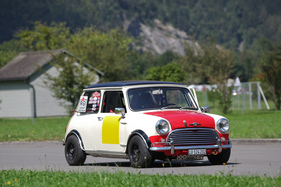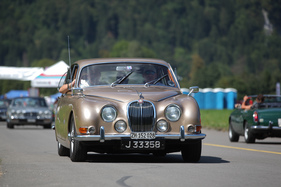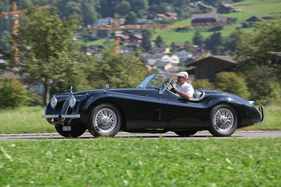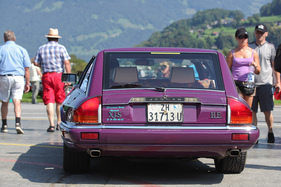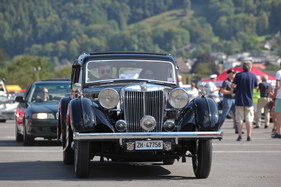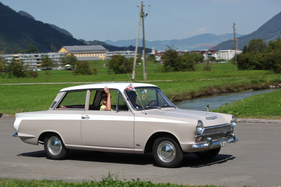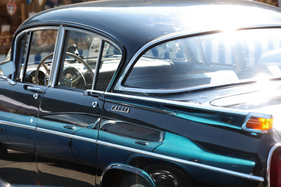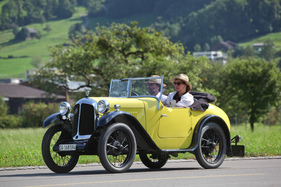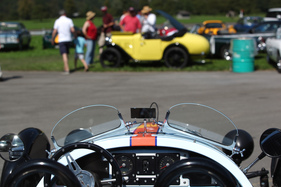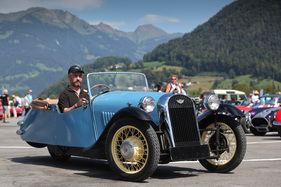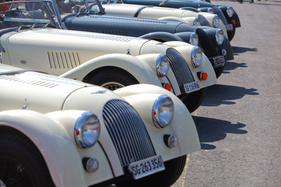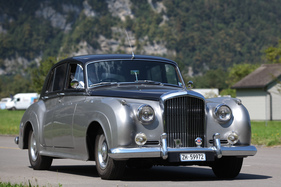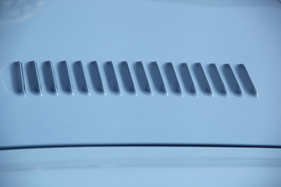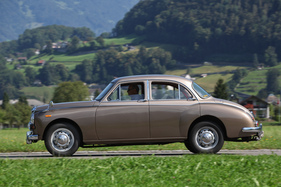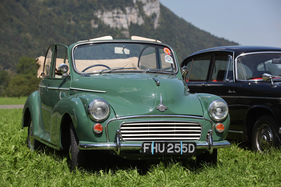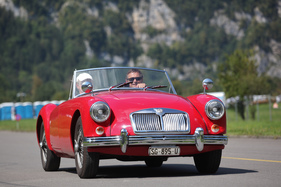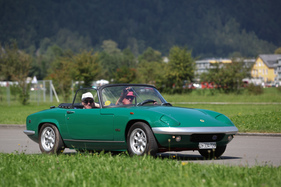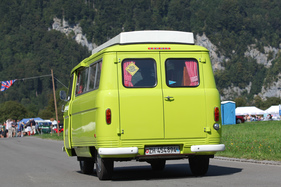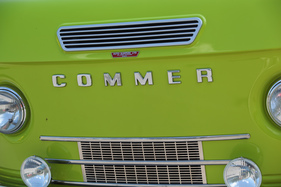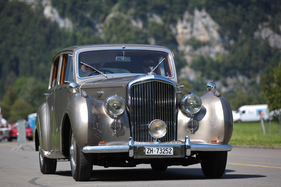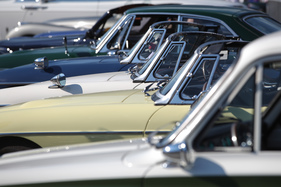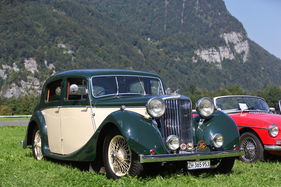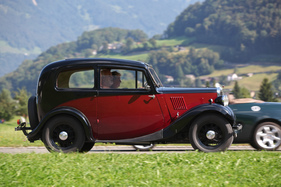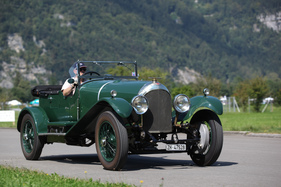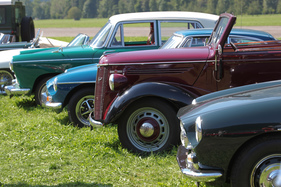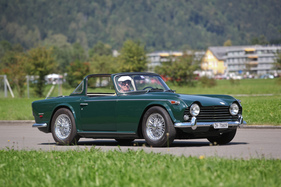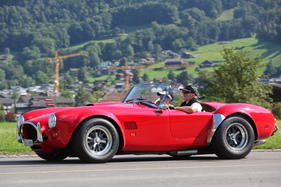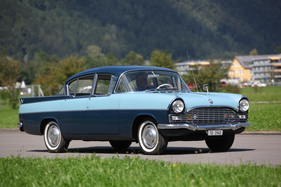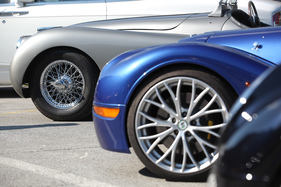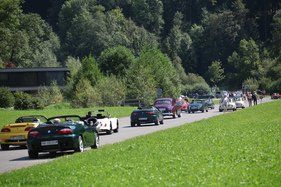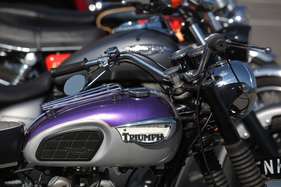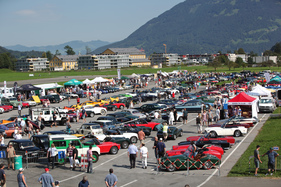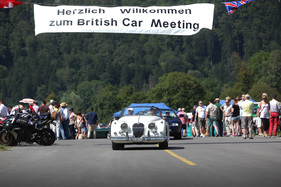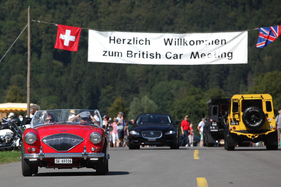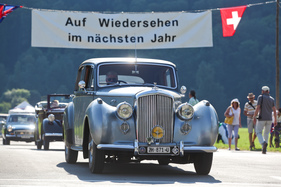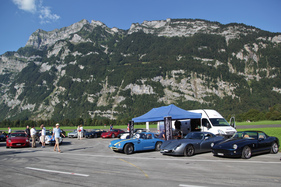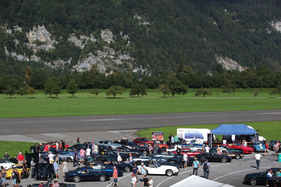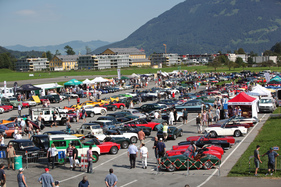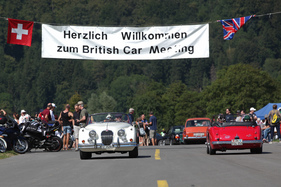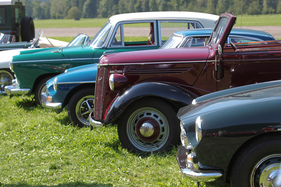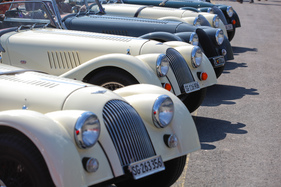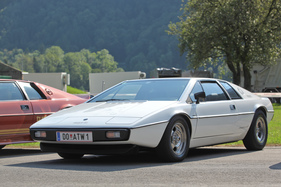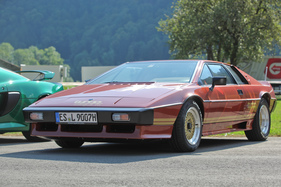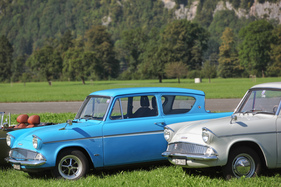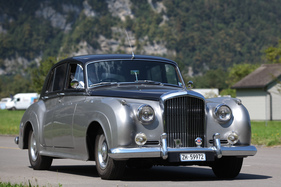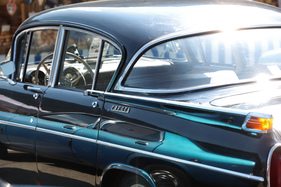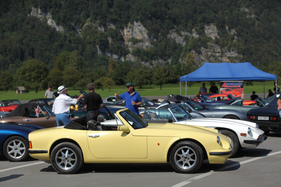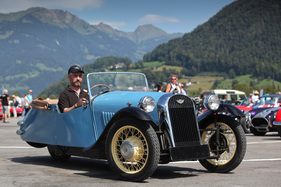The Swiss TR Club hosted the British Car Meeting ("BCM" for short) for the 37th time, and the event has been held at the airfield in Mollis in the canton of Glarus since 1999. On August 28, 2016, over 1,400 vehicles responded to the call, with around 30 vehicles meeting in Oftringen in 1978.
Anyone who drives a British car is invited, and a humpback Volvo and some kit cars that were not necessarily built in British Commonwealth countries proved that the marshals also turned a blind eye.
In any case, the British Car Meeting is a meeting of contrasts.
New and old
Unlike at other classic car meetings, all British vehicles are invited to Mollis, regardless of their age. So there may well be an Aston Martin from 2012 or a McLaren 650 from 2016 parked next to an 80-year-old Bentley.
While some classic car purists may find this off-putting, the young visitors were particularly pleased, as they can often do more with modern wing-armed sports cars from Lotus than with a pre-war rarity from Rover or Austin.
Morgan drivers in particular, whose cars still look (almost) exactly the same today as they did 50 or 80 years ago, flocked to Mollis in large numbers and parked their three- and four-wheeled sports cars on the airfield.
Mass production and special bodies
The 37th BCM featured cars from mass production, such as Minis from over 40 years of production or Ford Anglia, but also one-offs such as Alvis with Graber bodywork or a Rolls-Royce as a fire engine.
They were all noticed, because the compulsory program of a BMC visitor includes walking down the long rows of parked vehicles several times.
Film fame and bread-and-butter
The attentive observer could also find sports cars of the same type that had made it to movie stardom. Right next to each other were the Lotus Esprit S1, famous from the film "The Spy who loved me", and the brown-metallized Essex Turbo Esprit, which Bond drove through Cortina d'Ampezzo on skis in the film "For Your Eyes Only" after the white Esprit Turbo was blown up.
In Mollis, the two Esprits, both of which had traveled from abroad, stood peacefully on the square without Mr. Q. gadgets; at least the drivers had film posters and, in the case of the white S1, a signature from Roger Moore (on the trunk lid).
The flying Ford Anglia also achieved film fame in the Harry Potter films; the cars parked in Mollis had to travel by road.
They are just as much bread-and-butter cars as the Morris Minor or Ford Cortina, some of which also found their way to the canton of Glator.
Mini and Rolls-Royce
In Mollis there were very small cars to admire, such as the Mini, but also very large ones such as the Rolls-Royce and Bentley limousines.
The admiration of the spectators depended less on the price a car once cost and more on the individuality with which it was bodied or equipped.
A prancing Queen behind the windshield attracted just as much attention as an Emily on the hood.
Jaguar and Vauxhall
Not much is left of the car world of the British Empire in the new millennium, but Jaguar is thriving (in Indian hands) and seems to be getting its act together, while Vauxhall is largely just a brand under which Opel vehicles are sold in the UK.
This was once different as evidenced by some interesting Vauxhall saloons on site, while Jaguar was omnipresent as a brand, whether in the form of the sports cars of the thirties to eighties or the many saloon models that were also on site.
TVR and ?
The guest club in 2016 was the Swiss TVR Car Club, which represents the owners and fans of the sports car models from Blackpool. The history of the TVR brand, founded by Trevor Wilkinson, goes back to 1947 and it survived, with minor interruptions, for almost 60 years until the last vehicles were produced in 2006. There are currently rumors of a new edition of a TVR, Gordon Murray is said to be responsible for the design and Cosworth for the engine. It will be interesting to see.
In any case, around 50 TVR models representing almost the entire spectrum of the brand's history came together in Mollis, including two early Grantura, a Griffith from the sixties, a Tuscan, the entire M range from the seventies, some representatives of the Keilform era and many of the more modern TVR models such as S/S2/S3, Griffith, Chimaera, Tamora, T350, Tuscan and Sagaris. Only the Cerbera, the Vixen and the Trident were missing.
Almost from the very beginning, TVR relied on tubular frames and plastic bodies, building only sports cars that always had the engine between the front axle and the occupants. In terms of performance, the cars were often superior to the usually more expensive sports car competition, but the early buyers in particular had to lend a hand with the construction, as the cars were originally sold as a kit. It was not until the late sixties that TVR mainly produced complete cars. TVR was also one of the first manufacturers to equip its sports cars with a turbocharger.
Anyone who wanted to find out more about TVR was sure to get exhaustive information at the generous stand of the guest brand.
In high temperatures of over 30 degrees, a record number of British cars came together. To the astonishment of the organizers, the shoppers stayed much longer on the festival grounds than expected. No wonder, as there was plenty to eat, drink and discuss on site.
The dreaded queues were also largely absent on August 28, 2016, thanks to the new parking regime and the spread-out arrival of guests.
Nothing stands in the way of the 38th British Car Meeting in Mollis, which will take place on August 27, 2017. The Morgan Club will then be celebrating as the guest club.
